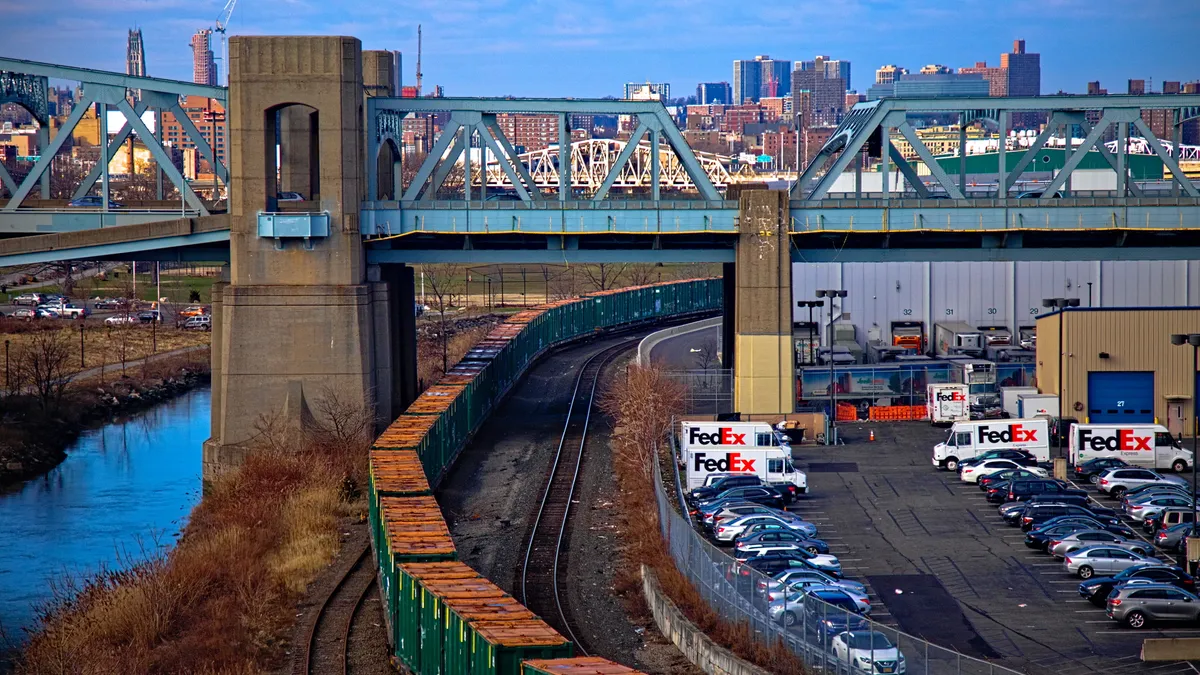Dive Brief:
- Waste Management of New York (WMNY) and the City of New York have answered a complaint from local residents alleging disposal activity at the High Acres landfill is harming their quality of life. A federal judge recently allowed the lawsuit – brought by Fresh Air For the Eastside (FAFE) and area residents – to go forward.
- After FAFE and community residents sued WMNY last year, the court only dismissed parts of an amended complaint relating to "private nuisance and trespass claims." Attorneys for the plaintiffs told Waste Dive the case will now enter discovery. Dwight Kanyuck, one of the attorneys, called it a "rare, in-depth discussion" of the issues facing communities near landfills.
- WMNY told Waste Dive it is "currently preparing for trial" at a to-be-determined date. "Waste Management is confident that once all the facts are heard in the case, we will prevail," wrote Garrett Trierweiler, senior manager of public affairs, via email.
Dive Insight:
WMNY has acknowledged controversies at High Acres, admitting the site has "experienced unusual, increased odors," and called impacts on the nearby community "unacceptable." The company argues that the major sources have been a blockage in the 24-inch perimeter gas landfill header, along with excess rainfall, which seemingly impacted gas wells and soil cover.
According to WMNY, it has dealt with these issues appropriately, through infrastructure changes, community meetings and frequent updates. But residents argue that the odors have decreased their property values and quality of life, in addition to sparking health concerns.
"People have been having health impacts from that [proximity], physical impacts from that, nausea, headaches, for a very, very long time," said Linda Shaw, an attorney representing the plaintiffs.
According to a copy of the plaintiff's amended complaint, residents have described the odors as "sickening, obnoxious, putrid, foul, and nauseating." Attorneys said people have also reported their houses shaking, seemingly in connection with the landfill's gas system, with the last such incident reported on Sept. 12. Residents also say they have grappled with an uptick in vermin, as well as heightened noise levels.
Affected community members maintain that WMNY's failure to adequately control odors is both negligent and illegal. They have also targeted New York, arguing the city represents more than 70% of the MSW disposed at the landfill. The company has said the city's waste constituted "no more than 52%" of the landfill's capacity between 2015 and 2018.
The city's Department of Sanitation (DSNY) awarded a $3.3 billion export contract to Waste Management in 2017 (following an unsuccessful deal with another landfill in the same region) which requires the company to find alternative sites if necessary. A little over a quarter of the waste handled under this contract – or around 7,800 tons per day – went to High Acres during the last fiscal year. Waste Management's original plans also included exporting material to Virginia.
DSNY Director of Communications Belinda Mager said the agency could not comment on ongoing litigation but specified, "our waste export contracts require that all disposal facilities comply with all applicable federal, state and local regulations."
The ongoing tension reflects growing problems in the Northeast, where pushback from environmental groups and communities has led to a sharp decline in the creation of new landfills. Shaw said this means existing sites, of which upstate New York has many, have become "mega-sized" to take in more and more waste. "No one wants a new one, so they're just making them higher," she said.
As that trend continues, community tensions have become increasingly common as landfill operators look to maximize their lifespans. The Northeast has the fastest decreasing regional landfill capacity in the U.S., with some of the country's highest tip fees, and pricing is on the rise for companies with pre-existing assets.













